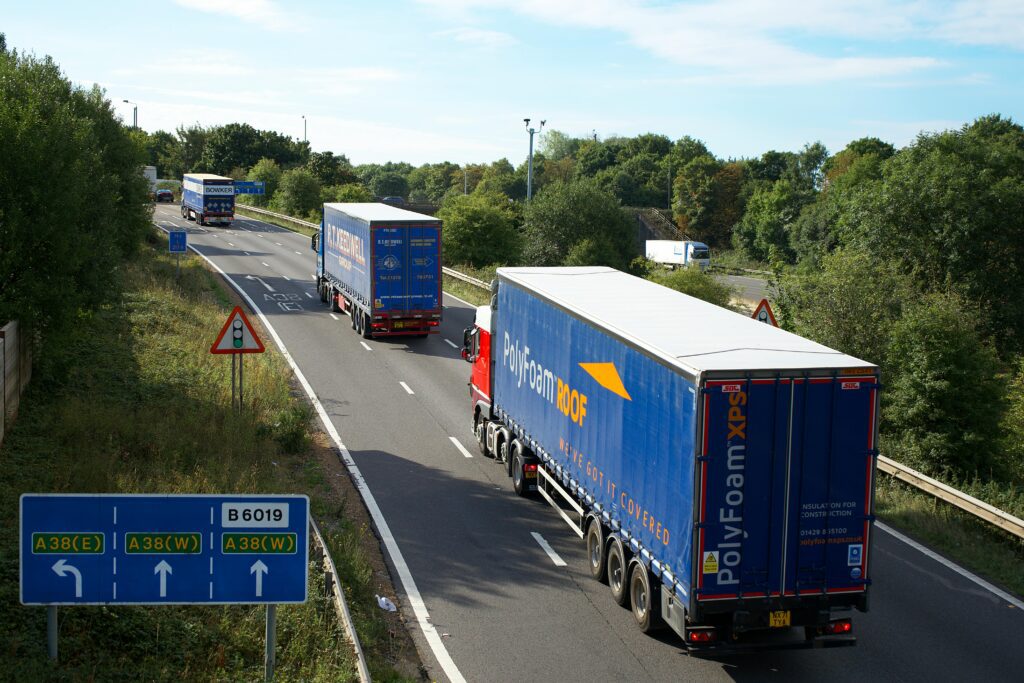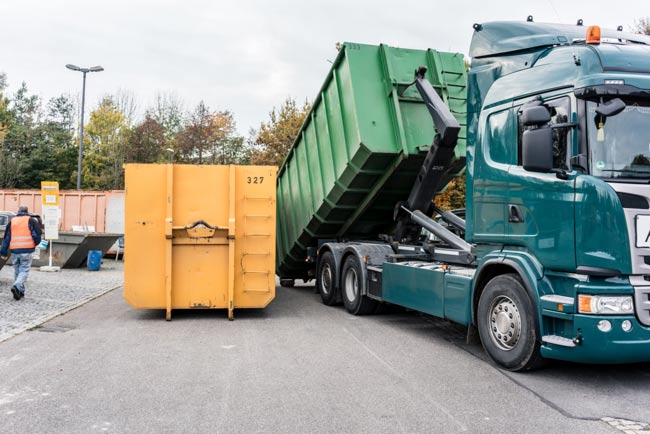The UK haulage sector has faced a chronic shortage of HGV drivers in recent years, which has had a crippling impact on the industry and which continues to affect supply chains. It has been referred to as ‘the perfect storm’. Voices in the industry feel that whilst the shortage is no longer critical, it remains a concern.
But what is the situation today? Read our article to find out more.
Is there a shortage of HGV drivers in 2025?
In 2021/22 the impact of the Covid-19 pandemic and associated closure of driver training facilities led to the UK experiencing empty shelves and fuel shortages. There simply were not enough drivers to fulfil logistics needs. However the situation has recovered somewhat with the reopening of training centres and a backlog of HGV driver training being cleared.
However the problem of HGV driver shortages is still a concern due to trends within the industry.
Logistics UK estimates that there was already a shortage of around 76,000 drivers before the world knew anything of Covid-19 or Brexit.
Problem: An aging workforce
It has long been known that the HGV driver sector has an aging workforce. According to the Office for National Statistics (ONS) the average age of HGV drivers is 55 years old, and the Road Haulage Association suggests that at present, less than 1% of drivers are under 25.
In fact the number of drivers over the age of 50 was seen to be greater than those under 50 in 2019 for the first time since records began (ONS). This illustrates that the rate of retirement has been rising for some time.
Another observation is that newly qualified drivers that lack experience are finding it hard to find employment as HGV drivers and that those drivers who are new to the industry can find it to be unwelcoming, underpaid and poorly serviced with complaints such as inadequate facilities on main haulage routes; issues which will be covered later on.
How will this be fixed?

Industry and government backed HGV skills boot camps were introduced earlier in 2022 to begin to tackle the training backlog. These were consistently oversubscribed with waiting lists kept by all training providers.
In 2024 the government announced that their scheme to train new HGV drivers, fill vacancies, and help ease the UK driver shortage would be extended to February 2026.
The scheme will offer a total of 11,000 driver training places and cost £34 million. Anyone with a full UK driving licence can apply to gain a fully subsidised Cat C or C+E licence by completing a 16 week driver training programme.
Problem: The loss of EU drivers
The loss of EU drivers can be blamed in part on post-Brexit changes to immigration rules, which took away the rights of many foreign workers to live and work in the UK.
Since Brexit, constant paperwork and customs procedures have undoubtedly made work in the UK less attractive to EU workers, however the pay and working conditions of HGV drivers in the UK are also to blame.
According to the publication ‘The Grocer’ in an article published in September 2021, “working conditions are arguably superior in France, Germany and Belgium through such laws that make it illegal to work on Sundays”.
However, whilst numbers of EU drivers working in the HGV industry have declined by around 12,500 since the early 2020 (Source ONS) this figure will also include drivers that opted to return home during the Covid-19 pandemic and decided not to return to the UK and is only around 18% of all drivers that have left the HGV industry in the UK.
How will this be fixed?
At present, temporary visas are advertised as and when they become available. These are often only valid for a number of weeks and don’t tend to be attractive to HGV drivers from the EU.
The personal and financial cost of leaving a home country and moving to the UK is not viable for the prospect of only a few weeks of work.
In order to make working in the UK an attractive prospect for European HGV drivers the onus lies with the UK government to issue longer-term visas to make it worth EU HGV drivers coming to work here.
Problem: Covid-19 pandemic impacts
The HGV industry, as with all sectors was affected by the Covid-19 pandemic. Lockdown restrictions that were imposed on the country led to the cancellation of HGV driver training courses and DVSA driving tests for over a year.
Between 2015-2019 there were approximately 25,000 newly trained HGV drivers each year which largely offset the loss of drivers due to retirement and leaving the industry.
Alongside the pause of HGV driver training and testing, the impact of lockdown restrictions saw a huge increase in demand for online grocery orders.
Supermarket supply chains faced enormous logistical issues, and as a result many shelves were often bare. Demand for drivers in this sector increased, however alongside this was an equally significant drop in demand for HGV drivers in the hospitality sector as restaurants and pubs were forced to close their doors.
How will this be fixed?
Since the last lockdown was lifted in March 2021 the DVSA has made a considerable effort to reduce the backlog of HGV driving tests.
90% more HGV driving tests have been made available compared to pre-pandemic levels and a recruitment drive to gain a further 40 HGV and bus driver examiners began in June 2021.
Analysis carried out on data from the latest ONS Labour Force Survey shows that 26,388 practical HGV tests were carried out in the first quarter of 2022, representing a 43% increase compared with the same quarter in 2019.
Along with the additional 4,000 HGV skills boot camp places being made available in 2023, the increase in HGV driver testing will begin to supply more drivers to the HGV sector.
Existing issues in the HGV driver sector
It is clear that there has been a shortage of HGV drivers for many years, well before Brexit and the Covid-19 pandemic had any impact. But what issues have played a part in this situation?
Problem: Poor work/life balance

HGV driver hours are often unsociable. With the advent of 24/7 deliveries at supermarkets this has never been more of an issue. A job as an HGV driver will usually involve long shifts spent away from home.
Increasing volumes of traffic on UK roads and seemingly endless roadworks (to patch up worn out roads across the country) can only add to drivers being away from home for longer and longer periods of time.
HGV driving is often therefore not attractive to younger drivers who don’t want to be away from their families.
If one parent is committed to long working hours, often on a changeable working pattern, it can make it very difficult for the other parent to manage the family and work in a job of their own.
Problem: Facilities en route
Facilities for HGV drivers on the road network across the UK are generally of a notoriously poor standard, especially when it comes to facilities for female drivers.
A lack of safe parking, clean wash facilities (that all too often are locked or out of order) and a general lack of respect are all issues that are quoted by HGV drivers.
With legally mandated rest-breaks it is crucial that more is done to ensure that there is enough lorry-parking across the UK’s road network so that drivers can take their required rest-breaks safely.
Drivers have the right to access safe and secure parking, good quality food and washing facilities, and this right isn’t being provided in enough places.
How will this be fixed?
In response to complaints from the industry the UK government launched a series of economic measures to support the UK haulage industry in a bid to help recruit and retain HGV drivers.
Bids were invited and successful applications were announced in September 2023. £8 million was awarded along with a further £11 million from the industry itself to provide significant upgrades to 39 roadside facilities across England as part of the Governments HGV Parking and Driver Welfare Grant Scheme.
Further information about this grant scheme and how it has supported the HGV driver industry can be found here.
Problem: Low wages
Whilst once considered to be a relatively well-paid job, the wages for HGV drivers have, in recent years, been seen to fall. Coupled with poor working conditions and unsociable hours, this has resulted in many HGV drivers choosing to leave the industry.
In addition to low wages, there are also substantial training costs that a driver must pay in order to become qualified.
HGV theory and driving tests costs around £270 including the Driver Certificate of Professional Competence (CPC) elements. However the CPC must be renewed every 5 years, with a driver undergoing 35 hours of training in their own time and at their own expense.
Another requirement for HGV drivers is that they must undergo a medical test, again at their own expense and which must be repeated every time their licence needs to be renewed. The HGV medical consultation charge is set by individual GP surgeries and by private providers. You can find out more in our HGV medical article here.
How will this be fixed?
In order to address some of these issues the UK government is providing support for those on Universal Credit and jobseekers who have an HGV licence towards the cost of getting their CPC qualification.
The government is also looking at ways to better manage compulsory ongoing training requirements so that it doesn’t become a barrier to those looking to join or return to the sector.
In addition, the sector has seen increases to HGV driver wages which is helping to retain existing staff and attract new drivers. Advertised salaries for those qualified to drive the heaviest vehicles have reportedly increased by an average of 25% in the first quarter of 2022 compared to the same period in 2021.
And finally…
The government and HGV industry are working together to try to limit the negative effects of the driver shortage by:
- Ensuring the stability of the fuel supply chain
- Increasing the efficiency of existing supply chains
With these measures, the investment being seen in the improvement of facilities for HGV drivers and the beginnings of improved pay and conditions for HGV drivers being seen within the sector, it is hopeful that HGV driver shortages in the UK will become a thing of the past.
Preconceptions about HGV driving have damaged the reputation of the industry. HGV driving is a skilled job that carries a lot of responsibility. It’s high time that the sector was fully appreciated – most if not all UK industries rely heavily on HGV drivers and would grind to a halt without them.




